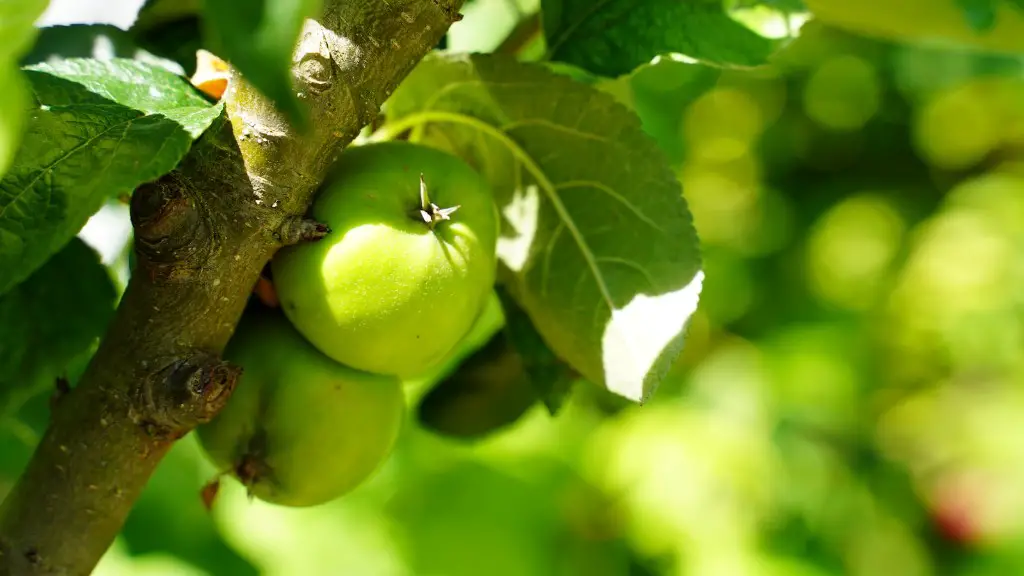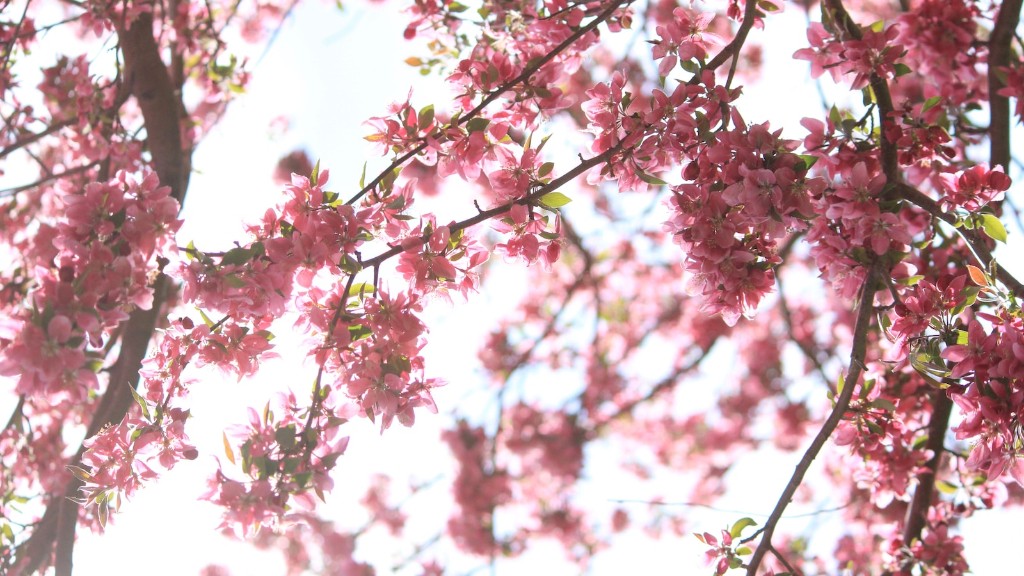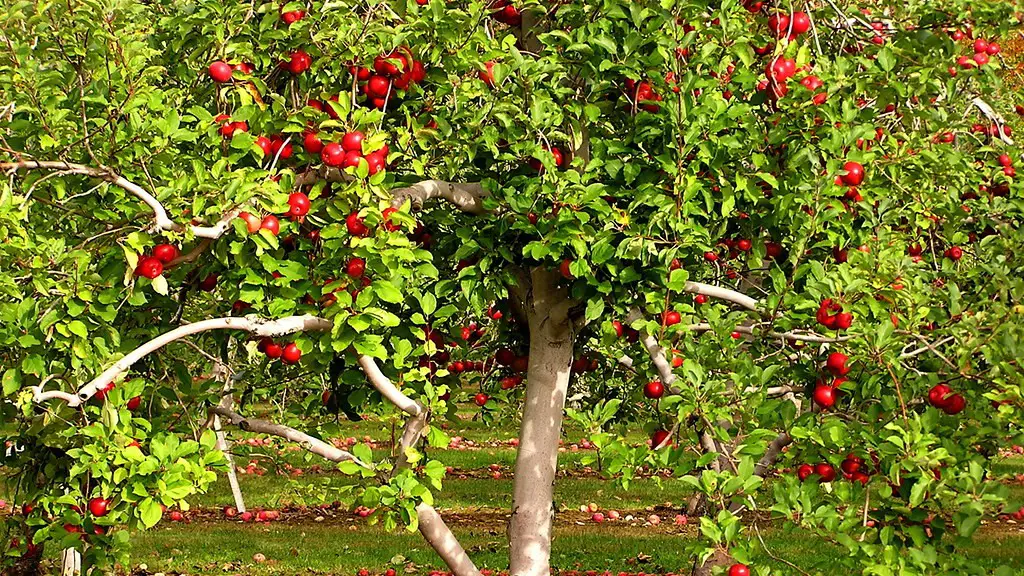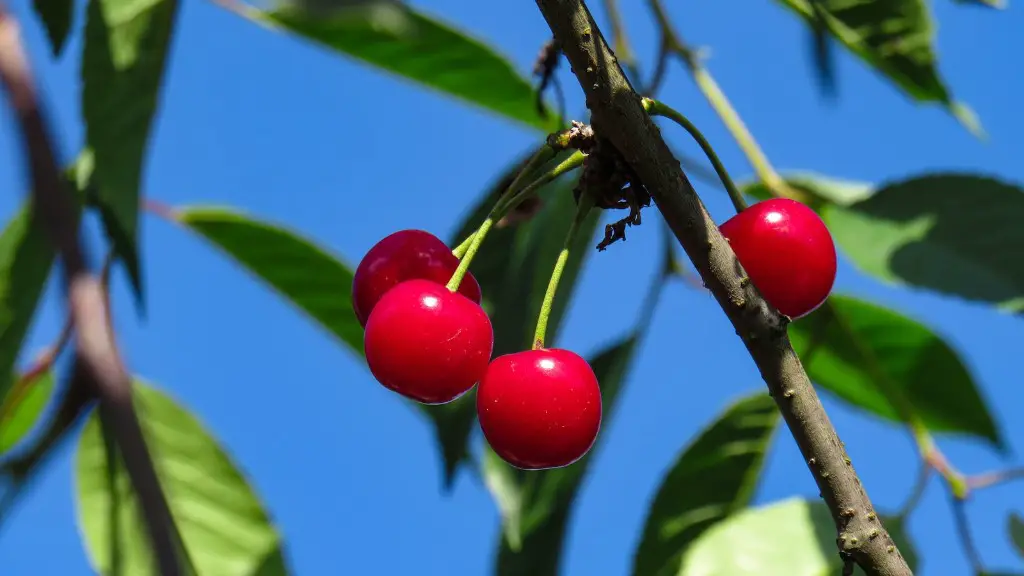What is the Best Time to Plant an Apple Tree? Planting an apple tree at the right time vastly improves the chance of success for the tree to thrive. Spring is the season with the most favorable conditions for planting and growth of trees. With the advent of spring comes the ideal temperature for planting in many regions, ranging from moderate to warm weather. Rainfall is generally plentiful during this season, which provides the necessary moisture for the tree to flourish. The season is also characterized by a long period of daylight, which increases photosynthesis and, in turn, provides plenty of nutrients for the tree to absorb.
It is preferable to purchase an apple tree in the winter, preferably at the beginning or end of the season. This gives gardeners an ideal amount of time, approximately four to five months, to prepare for the necessary planting conditions. These preparation tasks may include fertilizing, weeding, and properly securing the apple tree’s root ball. Additionally, during the winter months, it is best to select and check the soil, as well as determining the ideal location for planting by determining the sun and shade factors in the garden.
If a garden is located in a colder region, it is best to plant the apple tree in late spring when the soil begins to warm. Doing so prevents the freeze-thaw cycles that are common in many winter climates, which can lead to potential damage of the tree’s roots. By planting in late spring, apple trees are able to establish themselves before the winter months, which provides added protection and a chance of survival.
Before planting, it is crucial to examine the roots of any apple tree. Healthy trees are characterized by heavy, white-colored roots and a well-developed root system that is not pot-bound. On the other hand, if the root system appears to be in bad shape due to excessive circling and dead roots, the apple tree is likely to suffer from stunting and infection. In this case, it is best to purchase a new apple tree.
In conclusion, spring is the ideal time to plant an apple tree, provided the gardener is adequately prepared. Any preparatory work should be done during the winter months to ensure the roots and soil are ready for transplanting. Moreover, during the planting season, it is essential to inspect the purchased tree to guarantee the health of the root system. All of these tips, if followed correctly, can help ensure the successful planting and growth of the apple tree.
What is the Best Soil type for Planting an Apple Tree?
For optimal growth, apple trees should be planted in a soil type that adequately provides the necessary nutrients and water absorption. Although apple trees can grow in any soil type, loamy soil, or a combination of clay, silt and sand, is the best type for planting. Loamy soil is ideal for apple trees since it allows for effective aeration, drainage, and water absorption; these qualities are particularly beneficial to the growth of an apple tree. While soil that does not have these qualities should not be dismissed, it is important to understand its limitations.
Soil that is too acidic, between 3.5 and 6 pH, can be tolerated by apple trees, but should be addressed to prevent any long-term negative effects. The most effective way to combat soil acidity is by adding lime to the soil, which increases the pH levels to an optimal 6.5 to 7 pH. In comparison, soil with a higher pH of over 7 can also be tolerated, but one should be wary of its reduced fertility, since a lack of nutrients can stunt the tree’s growth.
In addition to pH levels, the soil should have a good drainage system to prevent water from pooling around the roots, as this can lead to infection, root rot, and disruption of the tree’s growth. To prevent any water pooling, amend the soil and add organic components such as compost, manure, or peat moss to attract more moisture and nutrients for the tree.
Finally, soil testing kits are easily obtainable and can be used to determine a wide range of components within the soil, including alkalinity, acidity, and nutrient levels. This will help the gardener find any issues while allowing corrections to be made before planting the tree. All in all, loamy soil with the right pH, drainage, and nutrient levels is the ideal soil type for planting an apple tree.
What are Some Conditions in an Unfavorable Environment for an Apple Tree?
Apple trees need favorable conditions to grow and produce fruit, and areas that have too much wind, cold temperatures, and poor soil can become unsuitable for the growth of an apple tree. For example, windy areas are typically less than desirable for planting any type of tree; strong gusts can damage branches, reduce the nutrients for the tree, and cause increased water evaporation from the leaves. In this regard, cold temperatures and strong gales can often make winter months a difficult situation for apple trees since the cold weather can disrupt the tree’s growth process.
On top of the adverse environmental conditions, soil should also be examined due to its inability to effectively provide the tree with enough nutrients. This is especially true for soil that is too acidic or alkaline, as well as rocky terrain, which can impede the tree’s growth and make it vulnerable to fungal diseases. The ideal soil type should be slightly acidic, or a pH level of 6.5 or below, as this allows for effective water absorption, oxygen transfer, and fertilizer penetration.
Regardless of the soil type, it is important to note that apple trees require plenty of sunlight for optimal photosynthesis. If trees are planted in a location where trees or buildings overshadow the plant, any shade from this environment could reduce the growth of the tree as well as reduce the amount of apples it produces. It is best to plant apple trees in an area that is free of any potential shade, or an area that is exposed to sunlight for at least 8 hours per day.
Overall, there are certain environments that may not be favorable for apple trees due to certain weather or soil conditions. It is important to note any areas with strong winds, low sunlight levels, poor soil, or excessive temperatures as they may prevent the tree from successfully establishing itself. Planting apple trees in their ideal environment will give them the best chance of thriving and producing sweet, delicious apples.
What are Some Methods to Protect an Apple Tree from Harmful Insects?
Apple trees are generally hardy and can survive in extreme conditions, however, if left unprotected, the trees can still be at risk from an array of insects. In order to reduce the likelihood of an insect infestation, it is important to examine the tree regularly for any symptoms that may indicate the presence of an unwelcome guest. While there are several visible signs, some of the most common include the presence of saw dust-like material near the tree and small holes in the leaves or trunk.
Once any signs of infestation are observed, there are a few different ways to address the situation. Chemical control, while widely available, is not recommended due to its potential long-term effects on the environment. For a more natural approach, pheromone traps, sticky bands, and hand-picking of pests can be used to keep any bugs at bay, while parasitic wasps, lacewings, and praying mantises can help keep the population of unwelcome insects to a minimum.
However, the best way to protect apple trees from insects is by using organic methods of pest management. Beneficial insecticides such as neem oil, insecticidal soap, and horticultural oil can be used as a preventive measure to control any existing and potential infestations before they become an issue. Applying these organic methods in conjunction with mulching and pruning can help maintain a healthy level of insect protection without any long-lasting environmental impact.
In conclusion, apple trees can be subject to damage from an array of insects, however, the tree can be safeguarded from the risk of infestation. It is best to stay vigilant and look for any visible signs, such as saw dust, leaf damage or holes in the trunk and leaves. Treating the tree with organic pesticides, such as neem oil, should be undertaken as a preventive measure to reduce the likelihood of an infestation. Additionally, adding mulch, pruning, and introducing beneficial insects into the garden are all effective methods of pest protection, which should be implemented to ensure the health and continued growth of apple trees.
How Long Does an Apple Tree Take to Produce Apples?
The time it takes for an apple tree to begin to produce fruit can vary substantially, depending on the type of tree and its location. Generally, it may usualy take anywhere from three to five years for a tree to begin producing apples, with some bearing fruit within a single year. Climate is an important factor in determining the time frame for the tree to start bearing fruit; warmer climates tend to speed up the process significantly since fruits can blossom and mature in a shorter duration.
Notably, some types of apple trees can take longer to bear fruit depending on their plant type. For example, coppiced trees have to implant themselves on their own, while budded trees require additional grafting. This extra grafting and planting time can lead to a longer waiting period of up to 8-10 years before the tree is able to begin growing apples. Furthermore, if the tree is purchased at a young age, or less than a year old, it can take up to 3 or 4 years before bearing apples.
With the right environment and maintenance of the tree, the wait need not be very long. The health of the tree should be a priority, as it lays the groundwork for a successful yield. Proper pruning, including fertilizing and thinning the tree, can help with the growth of fruit by allowing more sun rays to reach the plant. It is also important to note that insects can be a big problem during the summer months and it is best to treat the tree with organic pesticides, such as neem oil, to ensure no major harm to the tree and its future yield.
Finally, there are some apple trees that are available that are already grafted or budded and are able to bear fruits quicker, sometimes within a year or two. Although there is no guarantee of a fruit yield, these trees may be a viable option for those who do not wish to wait longer for the tree to bear fruit from scratch. All in all, the time it takes for an apple tree to produce apples varies greatly, depending on the tree type, climate, and the maintenance of the tree.





